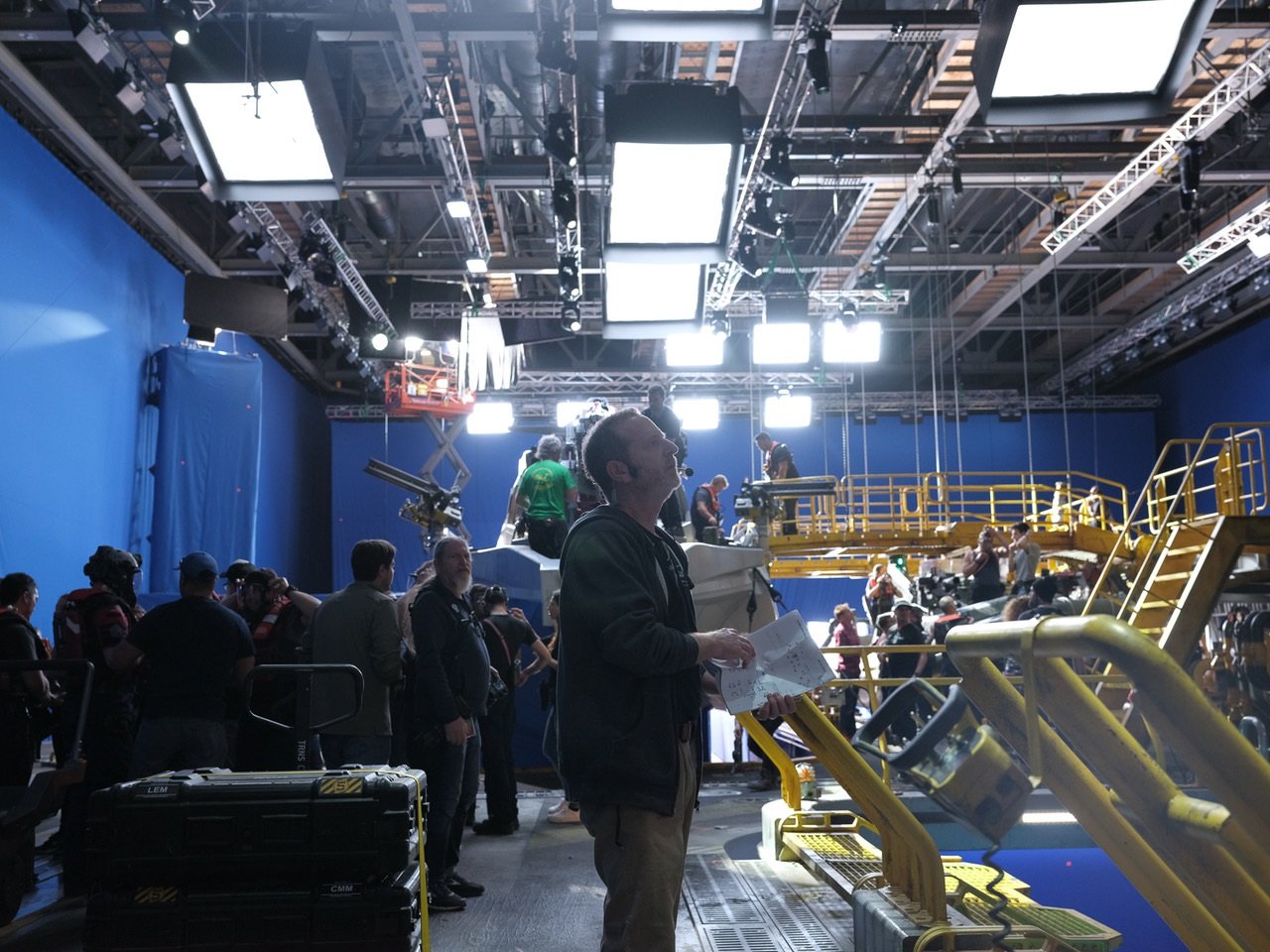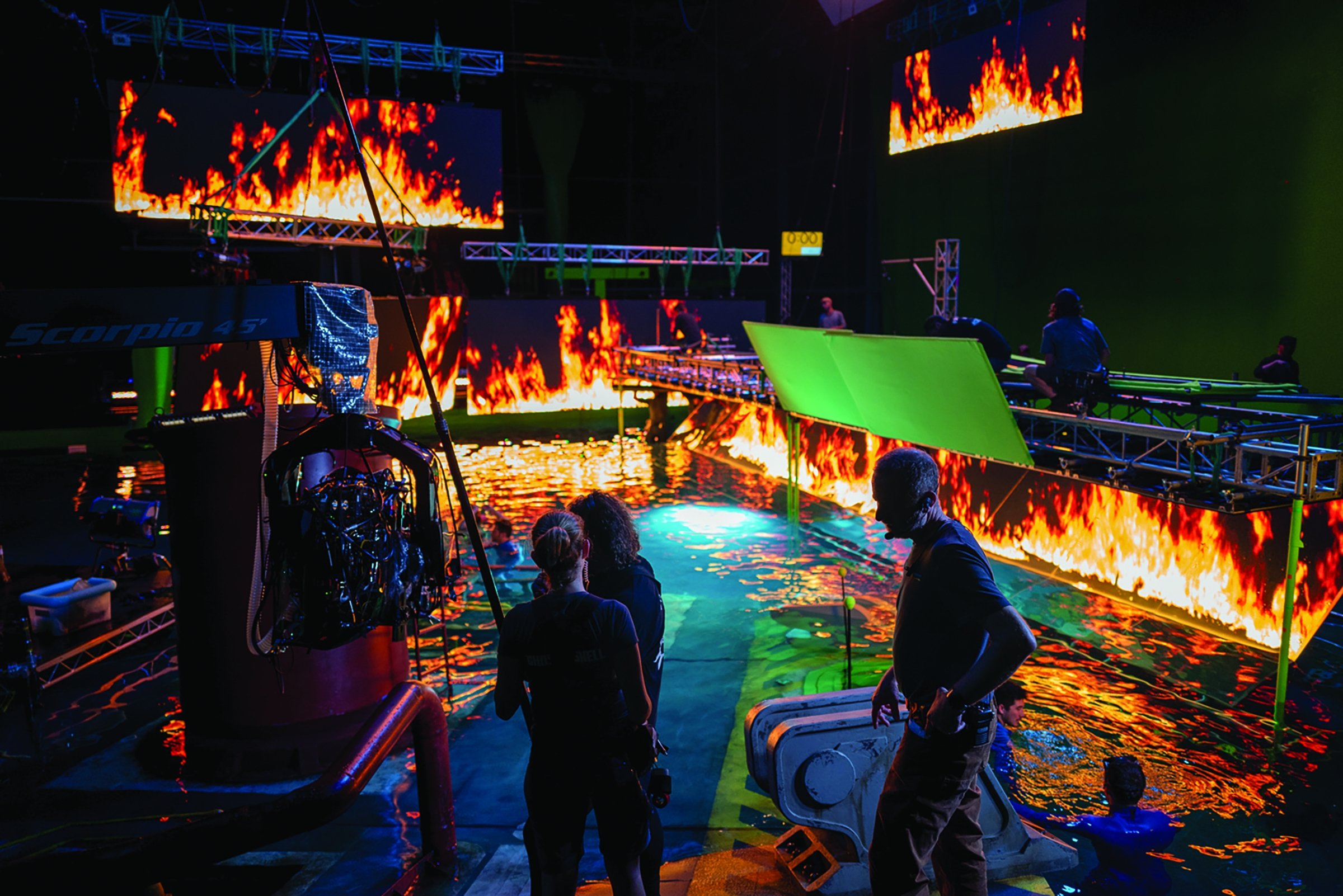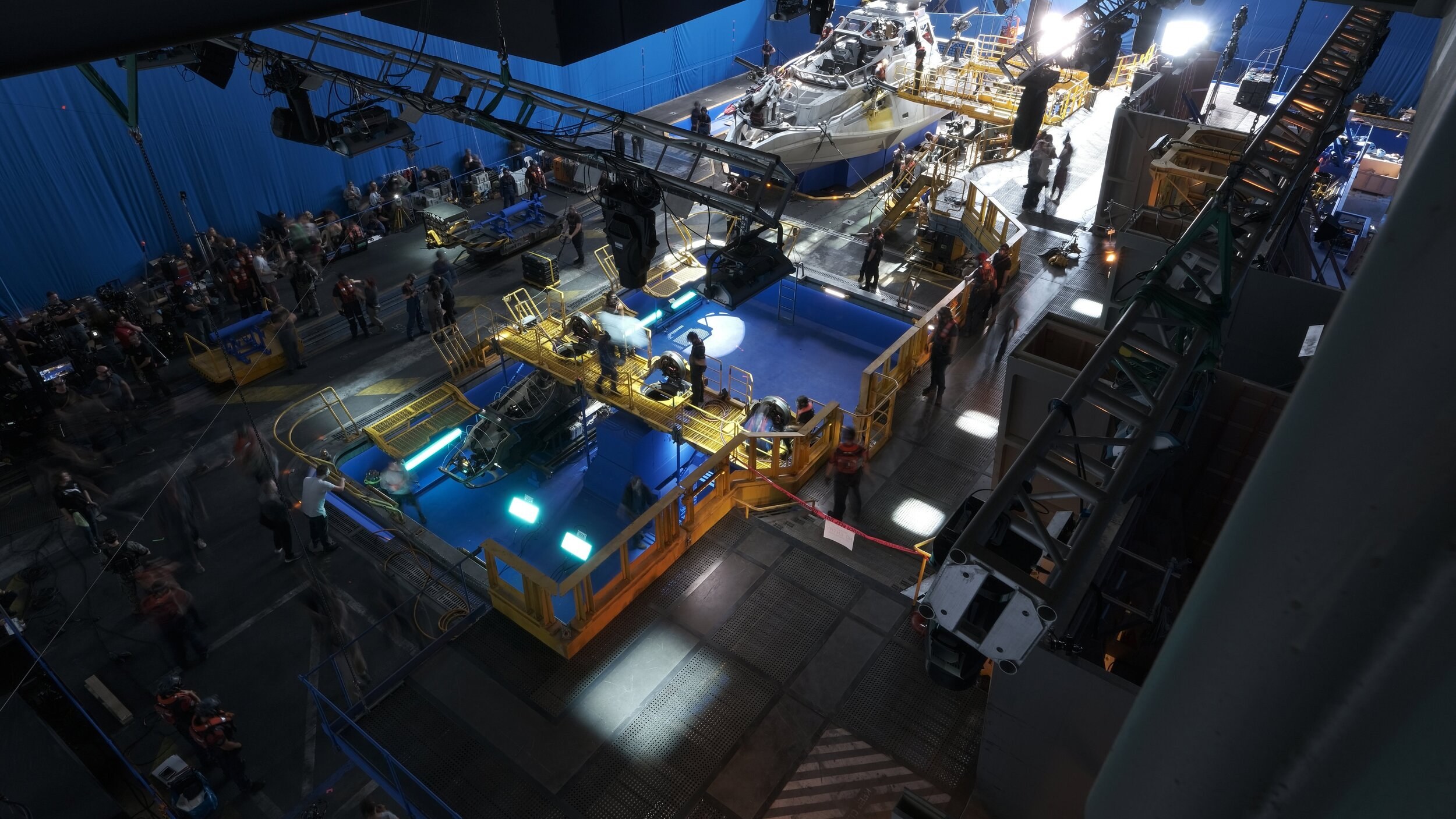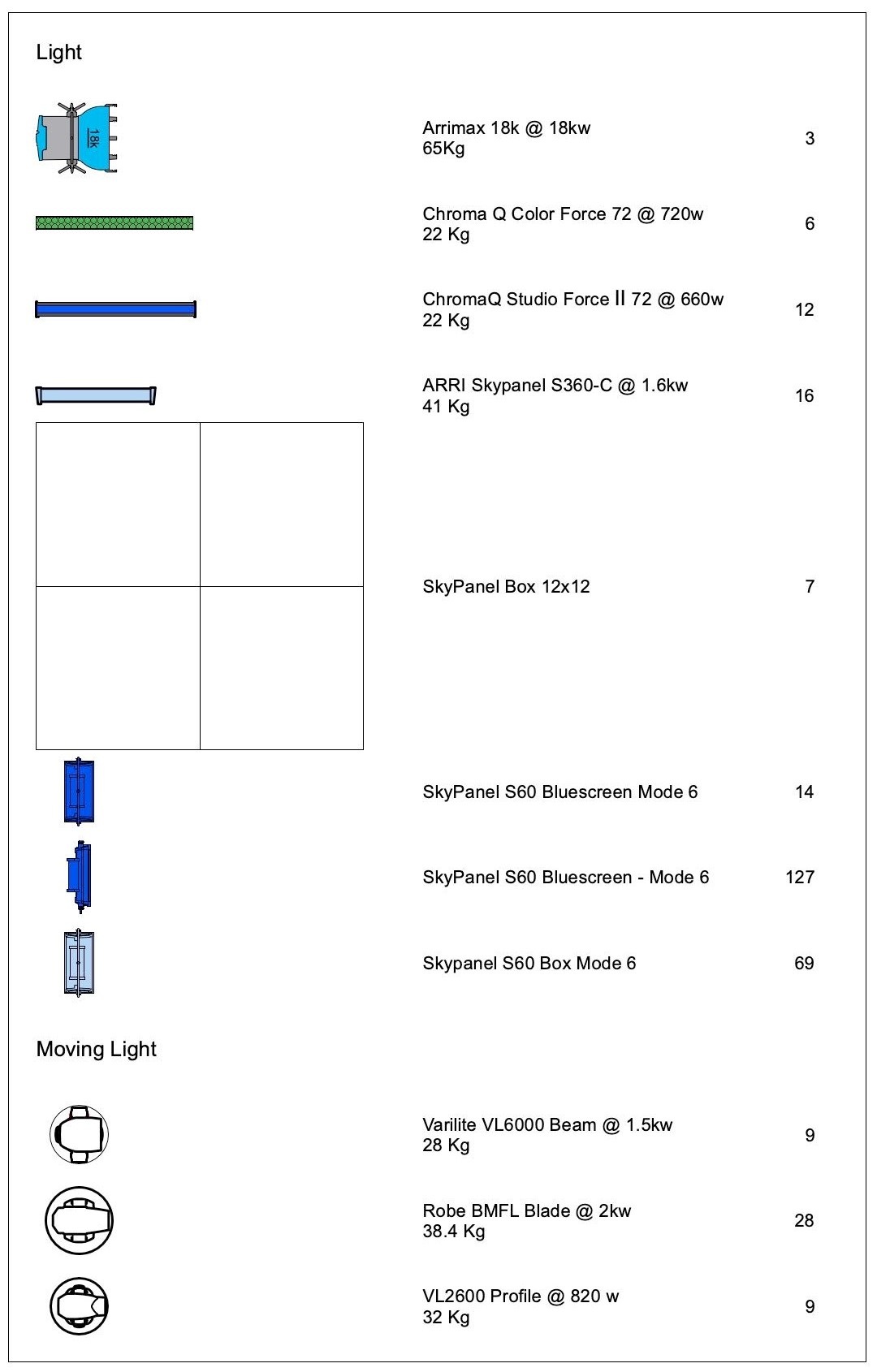A Virtual Approach to Practical Set Lighting for Avatar: The Way of Water
Gaffer Len Levine takes lighting design to another dimension for the hit sci-fi sequel.
While preparing for the practical photography of Avatar: The Way of Water, gaffer Len Levine realized that no simple lighting plot could effectively convey what he describes as the “brutal amount of information” generated by the production’s battalion of artists and technicians. Instead, he created highly-detailed 3D lighting diagrams in Vectorworks — computer-aided drawing software used by engineers, architects, and a wide range of entertainment professionals — for the more than 50 physical sets scheduled for construction at Stone Street Studios and Turner Warehouse in Wellington, and Kumeu Studios in Auckland.
“Vectorworks gives me insight into roughly what the actual set is going to look and feel like before it’s built, and by ‘walking’ through a set in 3D, new opportunities and pitfalls are revealed,” says Levine, who mainly borrowed Rhino and Vectorworks files from the art and construction departments to draft his plans. US-based lighting programmer Brian Woronec simplified these files, then layered and classed them for the lighting department.
“Once we sandwiched the stage as-builts, the art department models, the special effects footprint, the simulcam system, the cable-cam eyeline system parameters, and MotionBuilder environments, then I could divine from Russell’s notes and the techvis meetings how to go about lighting each set,” Levine remarks. “Finally, our 2D draftsman Dominic Crossman worked with the lighting console programmers to make the control plots.”
A FileMaker database was used to track techvis notes, Carpenter’s notes, Weta’s notes, Cameron’s notes, construction drawings, and light plots, which were then linked to a graphical interface in Set Logic, Levine's proprietary interactive call sheet platform also based on FileMaker. Rigging gaffer Dave Brown and production rigger Warren Jones implemented the scale plans on set.
“Keeping track of all that data was quite a task, but I’d been training my whole career for it,” says Levine, who is eager to share his experience with Vectorworks with other gaffers and electricians. “More and more people in my line of work are starting to see the value in doing things this way. My goal is to show them what’s possible.”

Below are two of Levine’s Vectorworks diagrams for Avatar: The Way of Water in the form of interactive panoramic presentations and fully-3D environments — along with 2D lighting plots and video renders — allowing American Cinematographer readers to explore these fantastic sets for themselves.
He offers this advice for navigating the 3D files: “People will be interested in exploring the preferences, such as lighting, rendering, and projection. You can also toggle the design layers and use the clip cube tool for slicing the model in different directions. If you get lost, select the home icon.”
The Chrome desktop browser and the Vectorworks Nomad mobile app (iOs App Store / Google Play Store) are recommended for the best 3D model performance. All navigation controls can be found in the Help panel of the viewer.
Visit the Vectorworks website for more information on their complete product line.
For the full story on this production, see our January 2023 issue, or read it online.

KUMEU FILM STUDIOS, STAGE B SURFACE TANK
At Kumeu Film Studios Auckland, a 75' x 100' surface tank was constructed on Stage B for live-action ocean scenes. Weta furnished Carpenter with effects plates for playback on 20' x 10' LED video screens around the tank with the goal of creating “in-camera” reflections instead of creating moving water reflections in CGI. Reflections off the surface of the water were achieved by positioning the screens overhead on travelers and cranes.

For reflections in the water, a rolling deck on each long side of the tank supported two 10' x 20' screens reflected into a 40' mirror partially submerged at a 45-degree angle to make the desired reflections meet the water line instead of having a gap. Carpenter found that the screens worked better for creating reflections than lighting actors, so they were augmented with pixel-mapped Chroma-Q Studio Force II 72 units and “nets” of daisy-chained Astera Titan Tubes tied together with sash cord. Linked to the video-screen playback footage, they provided synchronized, interactive lighting.
STONE STREET STUDIOS, STAGE K “SEA DRAGON”
The largest of the practical sets constructed for Avatar: The Way of Water was the two-story aft well deck of RDA’s behemoth Sea Dragon vessel. Located on the K Stage at Stone Street in Wellington, it featured two full-sized practical gunboats and two moon pools with submersibles. At one end of the deck was a bay door through which Carpenter could push sunlight. “We put ArriMaxes on a condor to tackle the broad strokes, one with a spot reflector and one with a flat reflector,” Levine elaborates. “We used the incredibly punchy Vari-Lite VL6000 Beam lights for targeted strikes of sunlight, Robe BMFL Blades and VL2600 lights for more finessed beams and accents, and an array of Arri SkyPanel S360-Cs for ambience.”

Inside the ship, softboxes with SkyPanel S60-Cs in four- and eight-light configurations could be raised and lowered at any angle from a truss. Effects lighting was accomplished with Chroma-Q Studio Force D XT 12s for flashes and 12-light Maxi Brutes for explosions. Lighting programmers Scott Barnes and Elton Hartney James ran the show from an ETC Hog 4-18 console, which is typically used for stadium events and theme-park attractions.

INSTRUMENT SUMMARY

CLICK HERE TO ENTER THE STONE STREET STAGE K 3D MODEL
MODEL CREDITS
Art Vision & Guidance: Ben Proctor, Luke Freeborn, Kim Sinclair
Set designers: Neil Kirkland, Andrew Chan, Ross Perkin, Bruce Walker, Colette Mullin, Alasdair Mott, Bex Asquith, Daniel Koene, Paulina Piasta, Sophia Martins Irvin
Vectorworks stage as-builts and master planning: Neil Kirkland
Weta liaisons: Eric Saindon, Dan Cox, Walter Garcia
Subdivisions, SkyPanel S60 symbols, and inspiration: Scott Barnes
Art dept model management organization and reduction: Brian Woronec, Josh Thatcher
Reality checks: Dave Brown, Byron Sparrow, Warren Jones, Gareth Prosser
LIDAR scans, eye-line, techno dolly, and scene mechanics in Maya and MotionBuilder: Casey Schatz
2D organization and final plots: Dominic Crossman, Jonny Cross
Vectorworks support: Lauren Hartman, Iskra Nikolova, Matt Artigues
Incredible vision: Russell Carpenter, James Cameron







